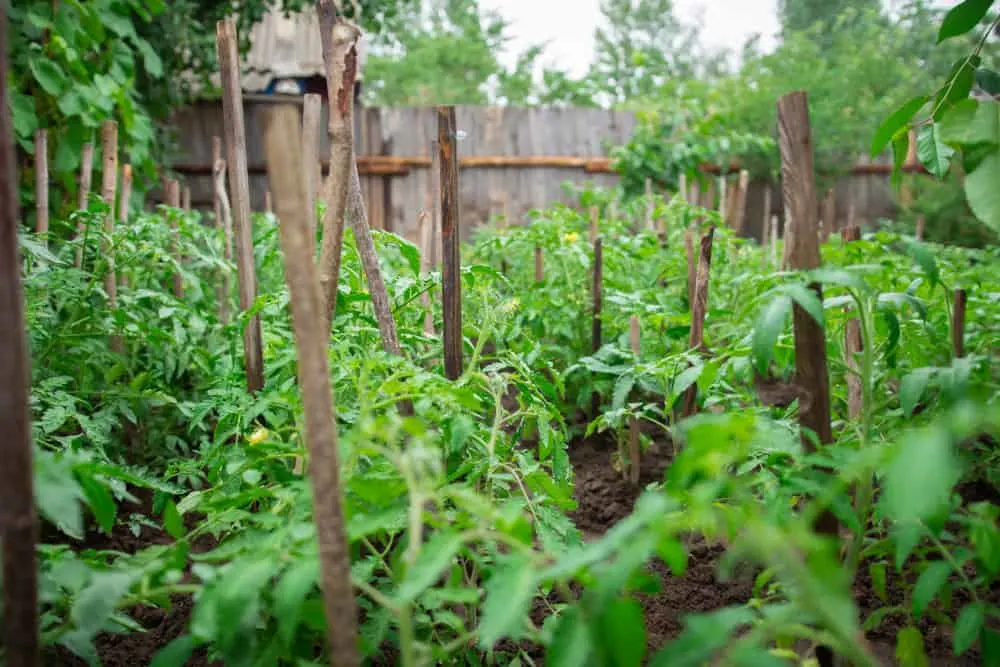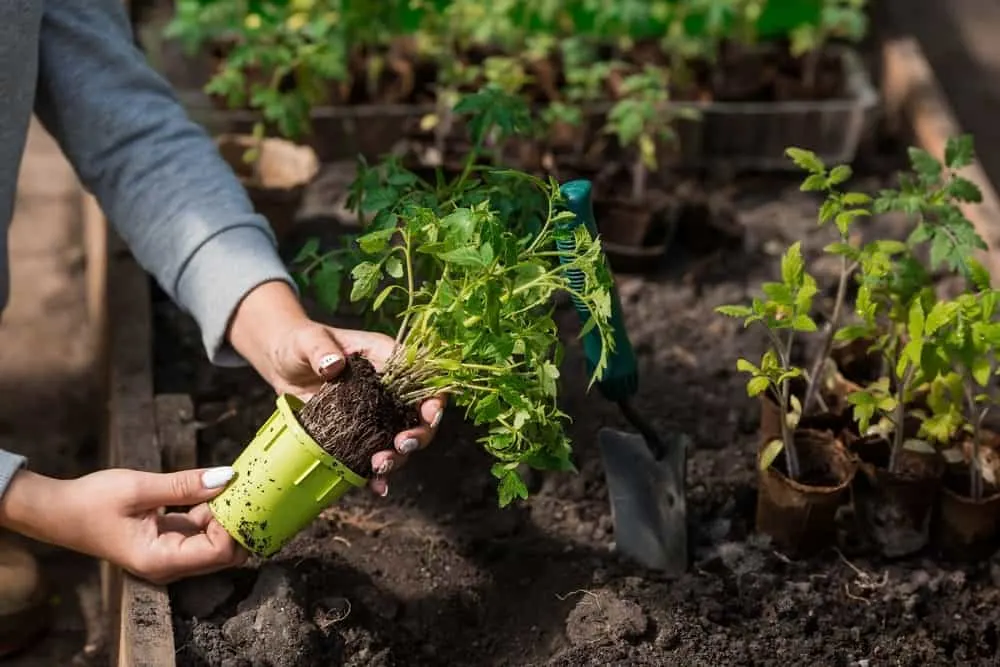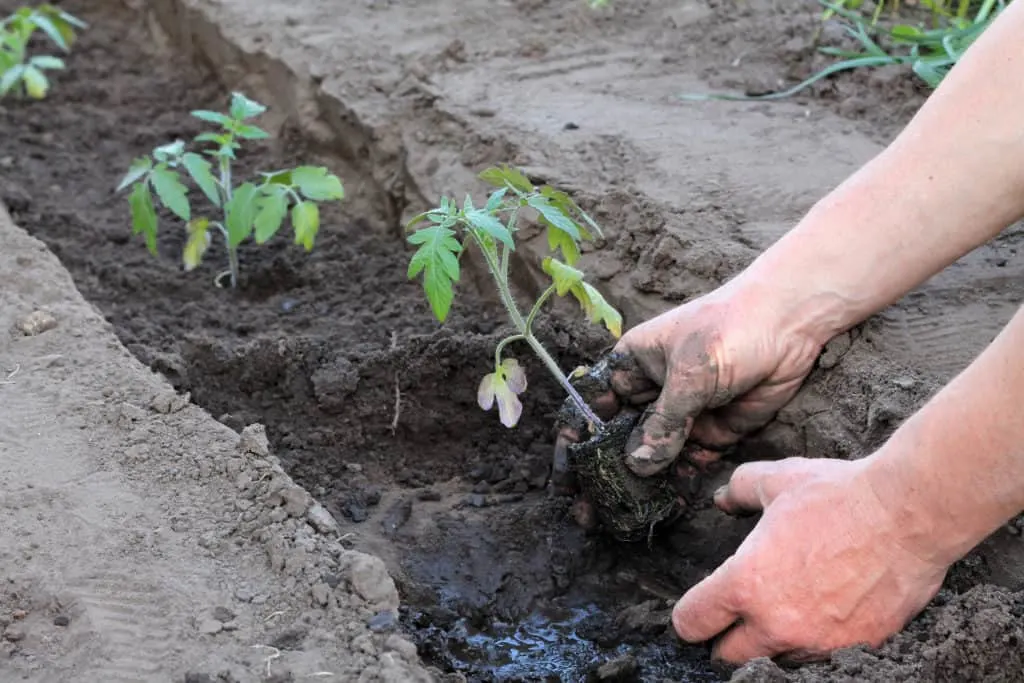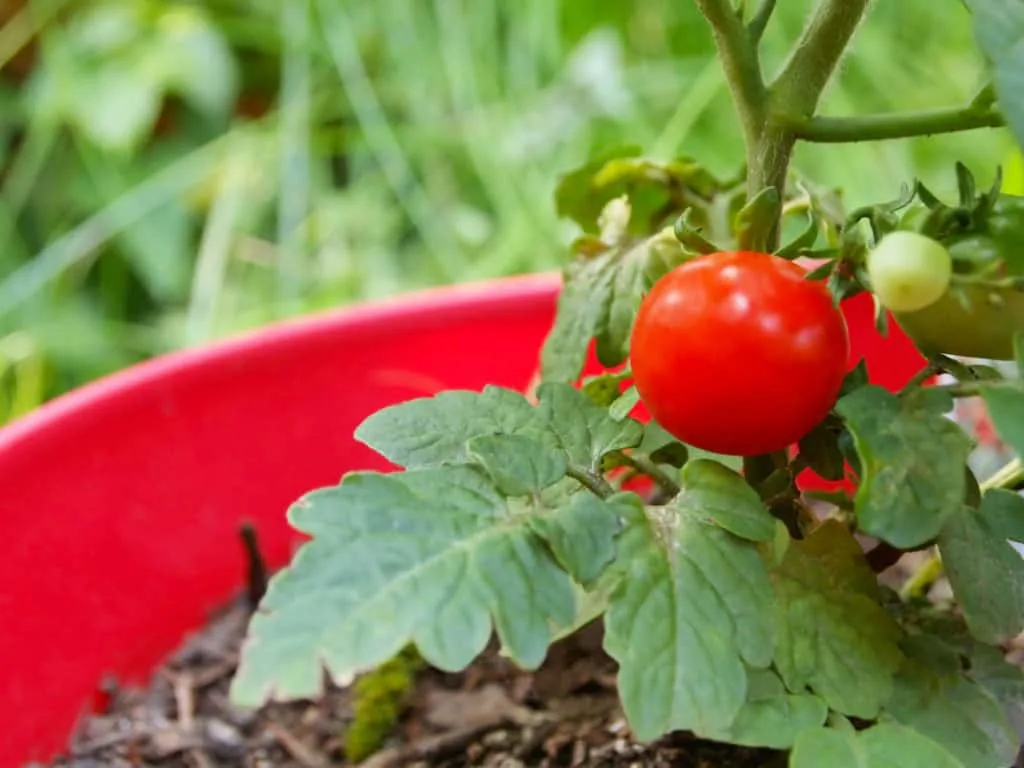
Correctly spaced tomato plants will reward you with healthy, disease-free, delicious tomatoes. Even if you have a small garden, don’t overlook the importance of spacing and planting your tomatoes properly.
With the many factors influencing tomato spacing, such as the type of tomato you’re planting and the supports used, it can be difficult to determine the exact formula.
We’re here to break it down for you.
Why Spacing Is Important

The overall health of your plants, the amount of light they get, and your accessibility to your plants are all influenced by their spacing.
Tomatoes planted too close together are more likely to harbor pests and diseases that spread easily between plants.
This is because the shielding of the soil and lower leaves from the sun facilitates moist environments – conditions that pests and diseases tend to thrive in.
Airflow is also a much-discussed preventative measure when treating disease and pests. Spacing tomatoes correctly increases airflow between and throughout the plants, limiting the chances of infection or infestation.

Close tomatoes may also fight for nutrients in the soil. Malnourished tomato plants are weaker and highly susceptible to diseases and pests. Without adequate growth, the stems become too weak to support the fruits, decreasing yields.
Further, correctly spaced tomatoes allow sunlight to reach all the leaves, not just the tops. As all gardeners know, sunlight is essential for photosynthesis, and the more photosynthesis is facilitated, the better the plant growth. This also increases plant health and overall fruit yield.
The last reason to space tomatoes is probably the most convincing – it makes your life a little easier.
Plants that are too close together are difficult to manage, inspect, and (most importantly), harvest. Spaced tomatoes allow you to check for diseases and pests, apply treatments, prune, and harvest without fear of damaging your plant.
Allow Room For Companion Plants

If you plan to add beneficial companion plants between or around your tomato plants (and here’s why you should), you should also consider leaving room to allow for this in the future.
Marigolds are one excellent companion plant that won’t take up a lot of room, but you’ll want to make sure there is enough spacing to allow light down to your lower marigolds.
Factors Influencing the Spacing of Tomatoes
Indeterminate vs Determinate Tomatoes
Indeterminate tomato varieties grow and produce fruit throughout the season. Determinate tomatoes, on the other hand, will flower and fruit all at once. The plant produces all fruits at the same time, but only once per season.
Determinate tomatoes are typically smaller, also known as bush tomatoes. Indeterminate tomatoes on the other hand are known as vining tomatoes. This name is quite fitting as indeterminate tomatoes can grow up to eight feet tall and require supports to keep them verticle. Determinate tomatoes only grow to three or four feet tall and stop growing.

The size and growing habits of your chosen variety will determine how much space it needs. Check your labels – they should indicate the type of tomato and its potential growing height. Knowing what size the plant will grow to will allow you to space them correctly when planting.
Cages or Stakes
Your tomato variety will also dictate how the tomato plants are supported.
Related Reading: Staking vs Caging Tomato Plants – Which Is Best?
Determinate tomatoes are much smaller, but bushier than indeterminates. They benefit from caging for support and control.
Smaller indeterminate tomatoes can also be caged. Cages allow for the tomatoes to be planted relatively close together, about 2 feet apart, as the growth is contained within the spacing of the cage.

Large indeterminate varieties require stakes for support. Staked tomatoes require a little more space – 2 feet at minimum, but preferably more. These varieties are usually planted in rows.
Smaller determinate types, such as Tiny Tims, can grow in containers without support. But, when planted in beds, they need support to stay upright and away from the soil.
Related Reading: How To Properly Use A Tomato Cage
Spacing Your Tomatoes
Rows should be spaced at least 4 feet apart. As staked tomatoes tend to take up more space, they need more than 2 feet of space per plant in these rows.
Unsupported indeterminate tomatoes (although a method not recommended) require far more space as they spread along the ground – at least 4 feet between plants.

Determinate tomatoes need less space between rows and plants due to their contained growth. Rows can be spaced 2 feet apart, with plants in rows 2 feet apart as well.
Traditional rows allow for planting tomatoes deeply, or on their sides in a trench, which can ensure greater success in planting and a healthy root system.
Related Reading: Plant Tomatoes Deep – The Secret To Huge Harvests
When planting a tomato on its side, ensure the 2 feet of space reaches either side of the stem. That entire section will become the root system, so no other plants should interfere with that space.

Raised beds are a good option for smaller gardens. As tomatoes are large plants, they usually do best planted on either end of the beds and caged to give them enough space to grow.
Where possible, space the tomatoes in a raised bed in the same way you would in a traditional bed.

Deep planting in a raised bed is beneficial, as it allows the tomatoes access to nutrients further in the soil and reduces competition.
If you’re planting in containers, the tomatoes will need plenty of space outwards and downwards to grow a healthy root system. Only plant one tomato per container to give them all they need to thrive.

To plant, measure your plant and dig a hole with a depth around two-thirds the length of your plant. Alternatively, dig a trench as long as two-thirds the length of the plant. Place the plant into the hole, burying as much of the stem as possible, or lay it on its side in the trench, and fill it with soil.
